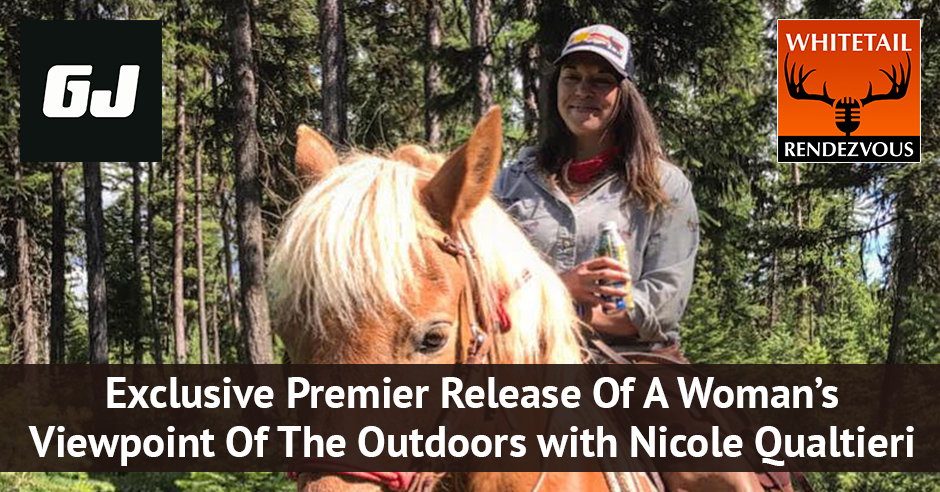
—
Listen to the podcast here:
Exclusive Premier Release Of A Woman’s Viewpoint Of The Outdoors with Nicole Qualtieri
I’m with the lady, Nicole Qualtieri. She’s the Hunt and Fishing Editor for GearJunkie. If you’ve never gone to GearJunkie, you need to. Why? What happened on Mont Blanc? You’ve got to tell the people.
A French skier/alpinist set two world records by ski base jumping in Mont Blanc. The first record was that no one had done it before. The second is he got the Alps trilogy. He ski–based jumped the Mount Eiger, Matterhorn and Mont Blanc. It’s a pretty fun video. It’s short, but we do a lot of that world record-type mountaineering and skiing outdoor rec.
Where can they see that clip?
They can go to GearJunkie.com.
GearJunkie is about gear, but Nicole was hired to get into hunting and fishing through her wisdom and vision. She represents the fastest-growing demographic in hunting and fishing, being a woman. We’re going to talk about a topic that she talked about on May 29, 2019 titled It’s Time We Kill These 5 Topics About Sportswomen. As an influencer in the outdoor industry, I want everybody to read this, take it to heart and take action and know what Nicole has to say. What was the backstory of this article? What’s the message you want people, male and female, to get?
This is my fifth year in the hunting media world. I have a pretty strong finger on the pulse of the different conversations that happen, whether it’s through something like podcasts, television shows or even the day-to-day conversations of women. I’ll say that this is more focused on women that are in the hunting industry on a day-to-day basis. I also know that there are women outside of the hunting industry that faces a lot of these conversations too. I noticed these repeating conversations that were happening over and over again. I felt they started to get in the way of having real conversations between not women and men, but between hunters. I see women as full participants in the world of the outdoors. When we’re constantly talking about the color pink or having to prove who we are as sportswomen, men feel like they need to apologize to us for something that is a result of having 90% men in this space and that’s changing.
I’ve never met a woman in the industry who is a token. Yes, I hunt and fish. It’s actually in my job title. Share on XAs it changes, it behooves us to have better conversations and the crying piece. The point of the piece is not to alienate people. It’s to bring us together so that we can have more substantial conversations around hunting that don’t feel split. I don’t think that a conversation about shrink it and pink it is even relevant these days because I have an entire closet full of hunting gear that’s not pink and it’s made for women and it fits well. It does its job in the field. There are some conversations that we can push past and hopefully get to the heart of what it is that we’re doing, which is getting outside, hiking, fishing and hunting, all of these things. It’s talking about experiences rather than the fact that I’m a woman, which is certainly a part of my experience, but it’s by far not the entirety of it.
What I got from your article was men grow up and realize that there are some women that can out-hunt and out-fish you, so get over it.
There are a lot of men that would hunt me into the dirt.
There are also some women that I know. Kirstie Pike from Prois, she hunts over 200 days a year. She has grown a company and has been successful. She might hunt rabbits and grouse, but she’s out there hunting. One of the Extreme Huntress, Ulrika Karlsson-Arne from Sweden, she got a tour.
There are some badass women out there. I don’t necessarily see myself as one of them, but I’m happy to speak up for them and talk about them. The reality of what women and men are both capable of doing these days is pretty incredible. A lot of that goes back to gear. When we think about the mountaineering technology that’s made its way into hunting gear, but in my opinion, anyone who buys a tag and attempts to do something has earned the right to call themselves a hunter and angler. If you go to hunters ed and you do the whole thing and you go out there with a rifle, your blaze orange and you try, you’ve met the base requirement. Hunting has become aspirational or at least hunting media has become aspirational that it can feel exclusive to a certain type of hunter. I don’t think that’s reflective of the demographics at large.
Everybody’s talking about R3: Recruit, Retain and Reactivate. States are getting involved. Meadow Kouffeld is my cohost and she’s a chair for the State of Minnesota R3. It’s a bigger area. The thing is we have to welcome people and I always thought about it. We’re around the campfire, we’re all common ground. It doesn’t matter. If you’re sitting there at the campfire no matter where it is, it’s all common ground and the checkbook’s out, the gender goes out and everybody’s there because they love the journey, the hunt and the adventure of it.
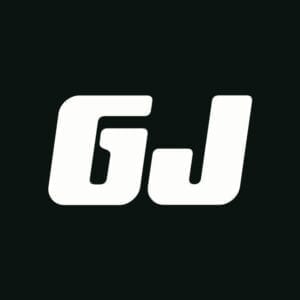
My favorite thing isn’t necessarily taking life at the end of my gun. It’s the challenge of getting to that point and then being able to process an animal and to dig in. For me, it’s a spiritual experience. That doesn’t have to be that way for everybody either. In this particular article, I’m definitely calling things out a little bit but if you read into the context, I tried to be funny and light. I wanted to make it so that people didn’t think of it as an angry piece. I wanted it to be a piece that helps people come together. I talked to a lot of women before putting this piece out there. When I wrote the piece, I sent it to about eight or ten women to read through. I even sent it to a couple of men because I wanted the feedback. I wanted to know, “Am I out of bounds here? Am I alienating people? Am I doing the wrong thing?” When it comes to calling things out within a community, we also still need to be kind and that was a huge focus for me in writing this piece.
We have to be more than kind. We have to be, from a man’s point of view, accept that women are hunters. Give them the same thing that we would do if we saw a buck in Wisconsin in the back of the truck and it was killed by a guy or a gal, we’re still going, “What a beautiful buck.” They do that in Wisconsin. The endurance season especially during the rut, guys go bar-to-bar, they never have to buy a drink.
I have had that happen in Montana. I’ve been able to pull up with a deer in the back of my car. I killed my last two bucks by myself and on public land in the backcountry. One was on public land, the other one’s a crazy story, but everything was fine. It’s the way hunting goes. It worked out. I’ve never felt such a sense of pride and capability as when I put those two bucks into my rig, got to bring them home and bring them in to see my friend’s at Bozeman. It’s a pretty incredible experience to be able to do it from start to finish.
It’s an accomplishment. That’s one of the growth areas why women are the fastest-growing demographics. All the companies, all the manufacturers know about this already. The hunting community in its entirety needs to embrace that more and it’s coming along. Still, there are times and places that we don’t do the best job we can.
We also were in a time where there are a lot more women in the industry. One thing that I’ve learned in the position that I’m at in GearJunkie is that I don’t work for an entire hunting and fishing publication. My publication is mostly focused on outdoor rec. Luckily, I have more of a platform than a lot of other female writers that I’ve met that are solely in the hunting space. I’ve had a few female writers reach out and say, “I could never get this piece published where I work.” There’s also been a little bit of censorship or women don’t want to put themselves at the front of a difficult conversation, which I can completely understand. I feel behooved in where I’m at and the platform that if I see something that isn’t jiving with my own sense of integrity and that is echoed around me, then I have a space to write about it. There are a lot of people that disagree with some of the points in this piece and that’s great. It’s a democracy. We need to know. I’m always happy for people to take me to the task, as long as they’re doing it in a way that’s not abusive. I haven’t had to face much of that.
You’ve got a company behind you that is supporting you all the way. Let’s talk about huntress and hunter. In your article, you talked about glamming up and on the womanizing side of hunting. I consider women who hunt as hunters.
Hunting is not a gendered activity. Share on XSome women call themselves hunters, which is totally cool. If you want to add femininity and your experience as a woman, like who you are as a hunter, that’s cool. Personally, it’s the fact that I grew up a little bit of a tomboy. I call myself a hunter. I would say they’re like the concentric circles of hunting communities and within my hunting community I’ve heard this one a lot. I almost think it’s silly. Women have been blamed for using huntress as this sexy, glammed up thing to get attention from men. I also think that if someone wants to express their femininity in the field, wear makeup and have curled hair, you have a badass on her, Jana Waller, who is always looking the best that she possibly can. I think that’s awesome. I feel like it’s something that’s been blown a little out of proportion.
Media goes to town on that a little bit too. Let’s talk about the final thoughts. If you don’t, who will?
I have a good friend named Chelsea Cassens. She’s a hunter and angler. She was featured in The New York Times on a piece that they did about hunting elk in Oregon. She’s a lifelong hunter. She comes from a different background than I do, but we bounce things off of each other a lot. We were having this conversation about these things that we were frustrated with. I was like, “Should I write about this?” Her response was, “If you don’t, who will?” That was a motivating factor because we talked a little bit about my platform. I do have an editor-in-chief who is a hunter. He’s also a badass ultra-marathoner. He runs these 100Ks, which I have yet to do.
He got a German Shorthaired Pointer. He’s the human version of a GSP so it’s the perfect match for him. He’s also a badass archery elk hunter. He’s an awesome guy. He’s a killer outland bird hunter. He supports me in these pieces. When I sent this to him, he helped me clarify some pieces. I don’t know if you’ve heard the term mansplaining. It’s a colloquial term that’s going around where men explain things to women that they already know about. It’s a jokey term. I tell my boss all the time that he’s always welcome to mansplain me because he’s almost always right. That’s our running joke in our little editorial conversation on the backend of this, but he helped me put this piece together and get it to a point where I felt good about putting it out there.
It’s a great piece and it can’t be shared enough because to me it gets right to the heart of the matter. I’d love not going round and round the oak tree, but getting into the heart of the matter thing. Here’s where we are, here’s the future, embrace it. If we do that, then that helps grow R3, which everybody is concerned about. We need more people to buy more tags or our hunting heritage as we know it is going to go away.
That gets to my last point, which is hunting to me isn’t a gendered activity. When I’m hunting deer, I’m not sitting there thinking about the fact that I’m a woman. I’m sitting there thinking about the fact that I’m a hunter and I want to fill my tag. There’s a lot of commonality in those moments that have nothing to do with whether we’re a woman or a man. That’s the closing thought on this piece. I hope that people see that as something to lean into. If we can stop having these gendered conversations, we’ll end up hearing a lot more about women’s real experiences in the field. There are some differences that happen out there that I’ve experienced, whether that’s been in an all-women’s hunting camp or many times being the only woman in a camp of all men. I love both scenarios and I don’t think that either one takes away anything from the other. It allows us to lean into a different experience. That’s what I’m about, especially in my role as a writer. I want people to have good experiences and I want there to be room for everybody in the circle.
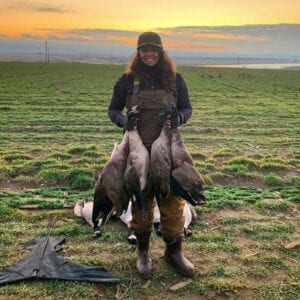
If somebody wants to read this article, where is it at?
You can still find it on GearJunkie.com under our Hunt & Fish. If you would hit Topics, you can see it to the right of GearJunkie. You’ll have a dropdown and you can find Hunt & Fish there. I have it up on the links in my Instagram profile. If you go to Topics, it’s a couple over. When you look at the outdoor rec space and the hunting space, I always joke that hunting is about ten years behind. I’m talking about a lot of these things, whether it’s conversations around women. There’s a sporting view on mental health with Dave Brinker. We’re talking about sportswomen. We’re talking about even things like size inclusivity, which is how does someone who’s plus size or a guy who’s big and tall find hunting clothes that are going to serve him in the field. There are all these different things that the hunting industry is catching up on, but nobody’s talking about them. It’s my goal as a writer to give screen time to these issues.
Even what’s going on in the Arctic National Wildlife Refuge, you can see the Welcome to Gwichyaa Zhee. That’s a pretty incredible film about how the indigenous people use the Arctic National Wildlife Refuge for sustenance. There are many different things that we can talk about whether it’s conservation, accessible gear, hunters education, putting a better face on hunting from a media perspective. Those are all things that I’m passionate about and will continue to do as we continue to build out on the Hunt & Fish space for GearJunkie.
Accessibility and gearing up, that’s a topic I want to talk about. Everybody in my Deer Hunting Institute Part 1 course, I got a whole section on how to find a place to hunt. Even though there are millions of millions of acres out west, even in Bozeman it’s getting more and more landlocked.
Not even landlocked around Bozeman, it’s highly pressured. You have to get smart about how you’re using tools and doing it in a way that’s going to be fruitful.
Let’s talk about accessibility and what you want to unpack from that.
If people can stop having these gendered conversations, we'll end up hearing a lot more about women's real experiences in the field. Share on XWe’ve been talking about R3 a little bit. What they’re doing is commendable. Hunting is a difficult thing to recruit people. I didn’t shoot a gun until I was 30 years old. I started hunting that year, the same year that I started shooting. R3 is trying to do something that needs to happen in this place that we’re in. Whether it’s buying more tags, educating more hunters or bringing more people into the fold, I totally understand the point. One of the things that when I was working at MeatEater that we did almost accidentally was we brought in people to hunting by talking about food and talking about this accessible, grass-fed, grass–finished, organic meat that essentially lives on the landscape.
When we think about wildlife, they’re an incredible source of food to put on the table. People don’t know where to start with that. What I was able to learn there, especially as I was learning how to hunt was how to communicate about it to people. Get down to those baseline points, like what are the five things you definitely need to take into the field? The best we can do to bring people into the fold is to share our meat or what Steven Rinella calls the venison diplomacy, which is one of my favorite terms in the hunting world. Nothing will change somebody’s mind like a perfectly dry-aged venison steak, which is something that I do on a pretty regular basis.
Venison diplomacy is a big part of it. The other side of it is making information accessible. If you go to GearJunkie, one of our most shared posts is Resources for the New Hunter that takes them through the fact that you need to do a hunters ed, figuring out where your local gun range is to help you learn how to shoot, connecting to nonprofits like Backcountry Hunters & Anglers. The reason that I found my hunting community was because I joined Bozeman’s BHA group. We met once a month and did events. I got a ton of hunting partners out of that, which took me on my first hunt. They helped me with processing my deer that became my close friends.
Having those communities accessible to people through nonprofits is important. If I can continue doing my part in educating people and making gear accessible. I don’t think that people need to spend $2,000 or $2,500 to get into hunting. I like to tell people I killed my first deer in yoga pants from Target, an old beat up J. Crew jacket and a pair of SOREL boots. It doesn’t take camo to kill an animal. It doesn’t take an expensive pair of boots depending on where you are. What it does take is an education in hunter safety, a good firearm, and hopefully a mentor to walk you through the process.
I want to talk about a safe community because one thing women do better than men, men typically say, “Look at my buck. Look at my elk. Look at me.” Women say, “I went out and I got with Sara Lee and Jane and we went up to Eagle Lake. We caught all these trout. We ate them, drank some wine, set around the campfire, had a great time and came home,” rather than, “Look at me.” There’s a short difference to the story. The women tell the story and they like to get with other women telling stories and sharing. Women share a lot better than men. Just look at a coffee shop, there are men and some are women. There are larger groups of women than men.
We’re definitely communal creatures. Men tend to be competitive. A lot of men attach their masculinity to their hunting, like the bigger the buck, the more of a man they get to be. It’s all testosterone, which to me is funny. I also appreciate those stories too. We don’t have any societal constructs telling us that we should be killing a huge buck or a huge elk. There’s a lot of new space in the hunting world for women. I hosted a camp with eighteen women in the Crazy Mountains. We hunted elk and deer. It was hard. It was DIY, public land hunting. We weren’t being guided. We ended up filling a tag and getting close to filling a lot of other tags. That’s hunting. We had a short period of time to do it. Our wine selection was unbelievable. An incredible wine and whiskey and we had wild game for every single dinner.
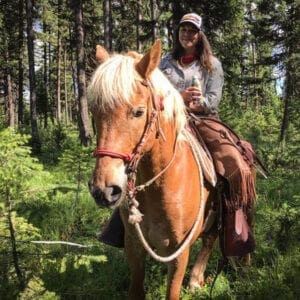
One of the girls did a bear sausage and gravy brunch, which was phenomenal. The actual biscuits were made out of bear lard. They reduced the fat from her husband’s bear. Even the biscuits were made out of bear fat. It was pretty incredible. We had elk pronghorn and all things. The communal sense in that group was fun. It was a lot of women that were new to hunting. It fit that demographic. We had three or four lifelong hunters there. The majority of the lifelong hunters were also hunters and instructors. I found that to be interesting. These women had long been a part of the community that had been welcomed in. A lot of them their dads taught them how to hunt and then they wanted to give back to that community and be a part of their hunter’s ed program. It was an incredible group of women. We had three women come that were observers. They’d never been on a hunt before. They weren’t sure if they wanted to do it. It was a cool experience. We’re doing it again.
Did you take horses in? Did you trail horses?
I bought my mare in December and then I accidentally ended up picking up another horse. I feel that’s the nature of horses. You get one and then they multiply. I’ve been a horse person my whole life, it’s fun to transition and think about using my horses in the mountains rather than for performance, which is my background in the equestrian world.
If you get that many ladies, they do put down an elk and it would be nice to quarter it up, put her on a horse and carry it down.
If I can swing it, I will bring them. The good news is that if we have eighteen to twenty people, nobody has to carry that much weight.
You’re hunting on a national forest. You‘re not hunting on private land.
Women are becoming full participants in the outdoor world. Share on XWe’re not hunting on private. We were hunting totally on public BLM. We did hunt some areas that in Montana are called Block Management Access. It’s public access to private land. You sign in to a box and then you’re able to hunt the alfalfa fields for whitetails. We were surrounded by a lot of national forests too. We hunted state land. We did hunt a little bit of private land that we got permission to hunt. I’m definitely not a public land snob. If I have the opportunity to hunt private land and it’s the right ethical opportunity for me, I’m going to take it.
It makes it easier for camping and then setting up your wall tent and all that.
We had a great national forest camp say up in the mountains. We had major gale winds when we were setting up the wall tents. It was a scene, I wished that someone had been filming it because it was like America’s Funniest Home Videos watching all these women holding onto the tents.
Think of that in and of itself, just setting up camp.
Setting up camp is one of the toughest parts of camp. We set up a huge wall tent that could fit all eighteen of us in there. It was not for sleeping, but we could do a full circle of all of us in the tent around the fire and eat in there. It was a lot of fun. It was a lot different than when I went turkey camping with all the guys and decided that I should probably set up my own tent because they were all farting too much. There’s a stereotype for you too. A women’s camp is a lot less smelly than men’s.
It’s got to be a biological function of how we process food. How would you like to summarize our discussion?
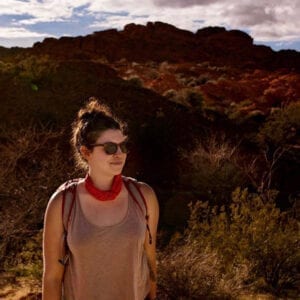
We’re all here around the campfire. There’s room for more people. There’s room for different people. There’s room for all perspectives. When you welcome that diversity to the table, it’s honestly a lot more fun. I appreciate you having me on a lot. The conversation that I want to have, it’s two-sided, lighthearted and when we keep it that way, so we all win.
You summarized it beautifully. It’s about having fun because I can’t imagine eighteen women not having fun in the mountain in a wall tent that a gale force wind is trying to blow it over.
At the end of the day, we still put meat on the table and that felt like a real accomplishment, especially in that scenario. We’re all hunters.
Nicole, it’s been a pleasure and I can’t wait until next time. On behalf of hundreds of thousands of readers of the show, thank you so much. How do people get to GearJunkie?
Go to GearJunkie.com. It’s pretty easy.
Thank you so much, Nicole.
Thank you.
Important Links:
- Nicole Qualtieri
- GearJunkie.com
- It’s Time We Kill These 5 Topics About Sportswomen
- Prois
- Ulrika Karlsson-Arne
- Chelsea Cassens
- Nicole Qualtieri on Instagram
- Hunt & Fish
- Backcountry Hunters & Anglers
- https://GearJunkie.com/latest
- https://GearJunkie.com/women-hunting-stereotypes
About Nicole Qualtieri
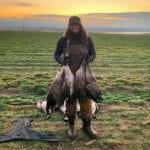 Nicole Qualtieri is the Hunt + Fish Editor for GearJunkie, an online publication focused on gear and news in the outdoors. She’s a hunter, angler, backpacker, and equestrian, and she currently lives in Butte, Montana
Nicole Qualtieri is the Hunt + Fish Editor for GearJunkie, an online publication focused on gear and news in the outdoors. She’s a hunter, angler, backpacker, and equestrian, and she currently lives in Butte, Montana
